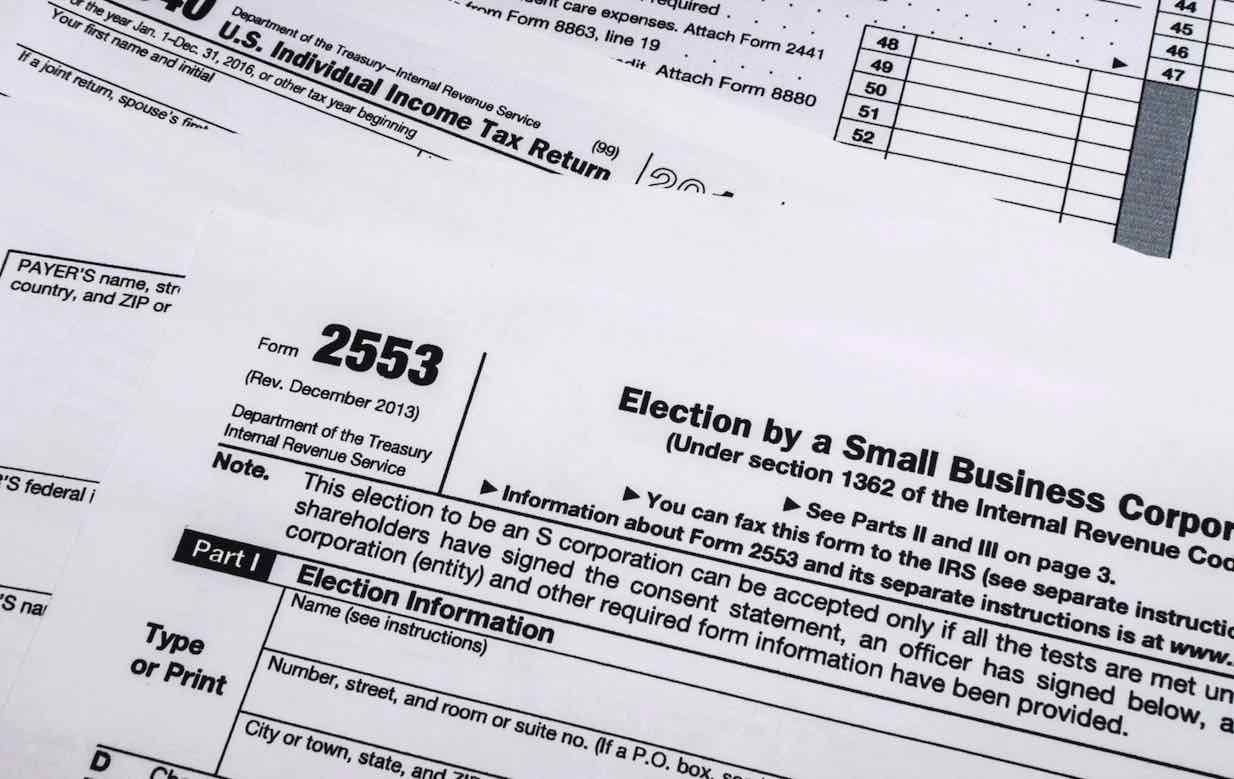What Is IRS Form 2553? How to Elect S Corporation Status for Your Business | TAXtical

Form 2553: What It Is, Who Needs It, and Why It Matters for Your Business
When starting a small business, choosing the right tax structure is one of the most important decisions you’ll make. One option that many small businesses choose is S corporation (S corp) status, which offers pass-through taxation and potential tax savings. To elect S corp status, you must file IRS Form 2553 – and timing matters.
In this blog post, TAXtical explains everything you need to know about Form 2553, including:
What Form 2553 is
Who should file it
When and how to file
Common mistakes to avoid
How TAXtical can help with the S corp election process
What Is Form 2553?
IRS Form 2553, titled Election by a Small Business Corporation, is used by eligible domestic corporations (and some LLCs) to elect S corporation tax treatment under Subchapter S of the Internal Revenue Code.
Filing this form allows your business to:
Avoid double taxation (corporate + personal income tax)
Pass profits and losses directly to shareholders
Pay employment taxes only on salaries, not distributions
Without Form 2553, your business will be taxed by default as a C corporation or a sole proprietorship/partnership, depending on your entity structure.
Who Should File Form 2553?
Form 2553 should be filed by businesses that:
Are domestic corporations or LLCs seeking to be taxed as an S corporation
Have no more than 100 shareholders
Have only eligible shareholders (U.S. citizens, residents, certain trusts and estates)
Have one class of stock
This election is especially beneficial for:
Small business owners wanting to reduce self-employment taxes
LLCs looking for pass-through taxation with added structure
Startups planning to reinvest profits and distribute dividends efficiently
When Should You File Form 2553?
Timing is crucial. To be effective for the current tax year, Form 2553 must be filed:
Within 2 months and 15 days after the beginning of the tax year you want the S corp election to take effect
Or at any time in the prior tax year
Example: If your tax year starts January 1, you must file Form 2553 by March 15 for the election to apply that year.
Late elections may still be accepted if certain conditions are met, but IRS approval is not guaranteed.
How to File Form 2553
Form 2553 requires key details including:
Business name, address, and EIN
Tax year the election applies to
Names and signatures of all shareholders
Consent of all shareholders (mandatory)
Reason for late election (if applicable)
You can mail or fax the completed form to the IRS, depending on your state.
Common Mistakes to Avoid
Filing Form 2553 isn’t overly complex, but errors can cause delays or IRS rejection. Common mistakes include:
Filing too late for the intended tax year
Missing or incorrect shareholder consent signatures
Providing wrong EIN or business name
Not meeting S corp eligibility requirements
Forgetting to file Form 8832 if your LLC hasn’t elected corporate status yet
Why Choose S Corporation Status?
Electing S corp status can help your business:
✅ Save on self-employment taxes
✅ Avoid double taxation
✅ Simplify profit distributions
✅ Attract investors with transparent pass-through structure
However, S corps also come with responsibilities such as running payroll, issuing K-1s to shareholders, and stricter compliance — which is where TAXtical can help.
Let TAXtical Simplify Your S Corp Election
At TAXtical, we guide small business owners through the process of filing Form 2553 and beyond:
🔹 Entity structure & tax strategy consultation
🔹 Form 2553 filing and compliance checks
🔹 Late S corp election support
🔹 Ongoing S corp tax planning and payroll setup
Ready to Elect S Corporation Status?
If you're considering becoming an S corp or unsure whether Form 2553 is right for you, TAXtical is here to help. We’ll evaluate your situation, file correctly, and help you avoid costly mistakes.
📞 Contact TAXtical today to schedule a consultation and secure your tax advantages with the right entity election!

